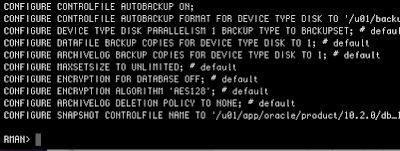Managing and checking backups it’s a common DBA task. Today a backup from one database that I manage, failed with the error----- RMAN backup failed with ORA-00600[8201] error-------. You should always check if the backups are finishing without errors, and you should always make some restore tests of your backups. As you probably know, when you hit an ORA-00600, usually this mean trouble. So let’s look at the error :
RMAN backup failed with ORA-00600[8201] error
RMAN-00571: ====================================================
RMAN-00569: =============== ERROR MESSAGE STACK FOLLOWS ========
RMAN-00571: ====================================================
RMAN-03002: failure of backup command at 22/10/2010 23:30:25
RMAN-00600: internal error, arguments [8201] [] [] [] []
This server has a 11g r2 Oracle Database and the backup uses an RMAN database catalog. The reason for this error is a well know bug (6035495). There is a mismatch between the information stored in the Controlfile and RMAN Catalog.
Solution-
One solution is to explicit resync catalog with the target database .
RMAN> resync catalog;
By resync the catalog I’ve solved my problem, but sometimes this does not solve it. If after the resync the problem still exists then probably you’ll need to recreate the controlfile of the target database .


